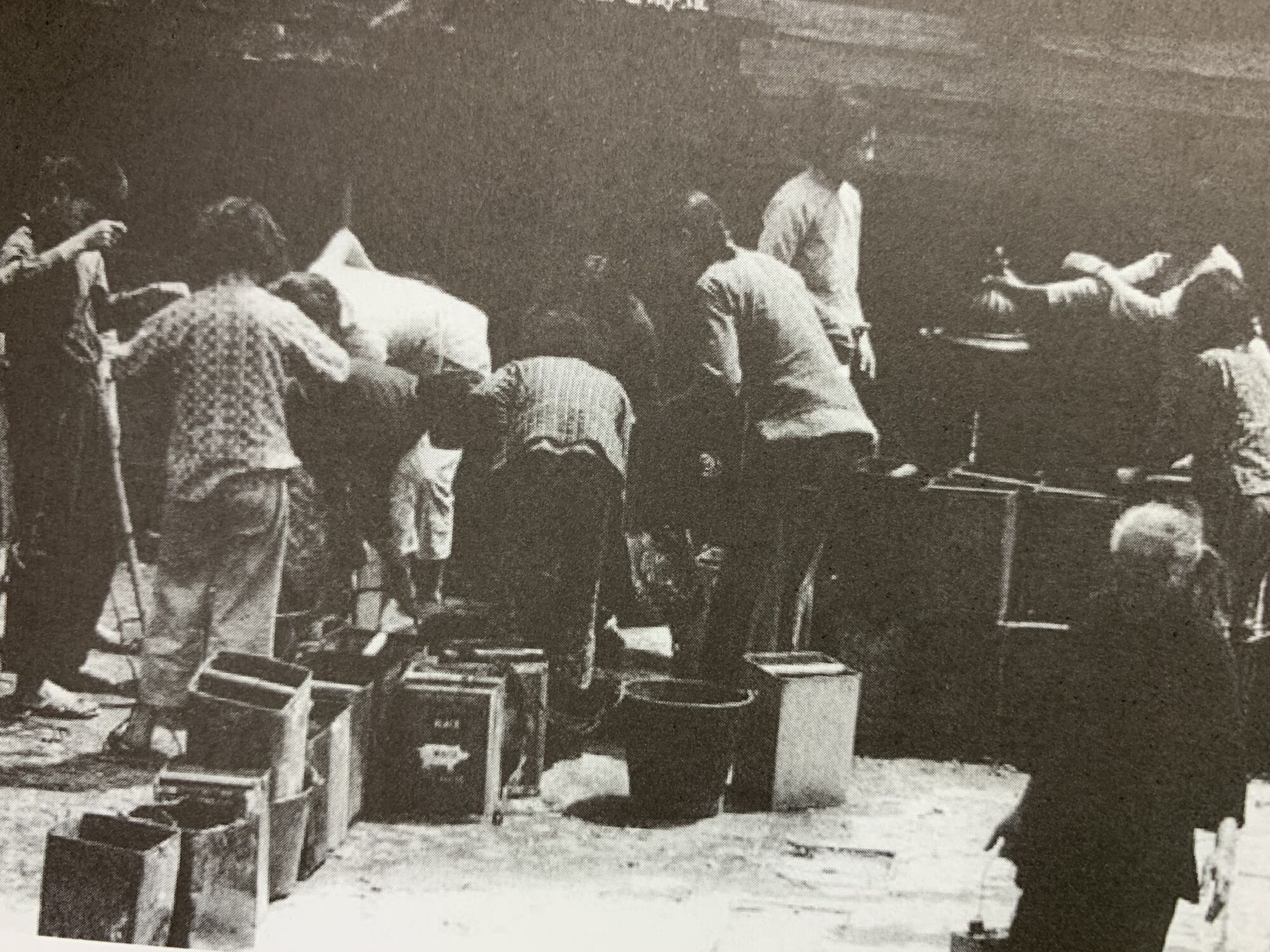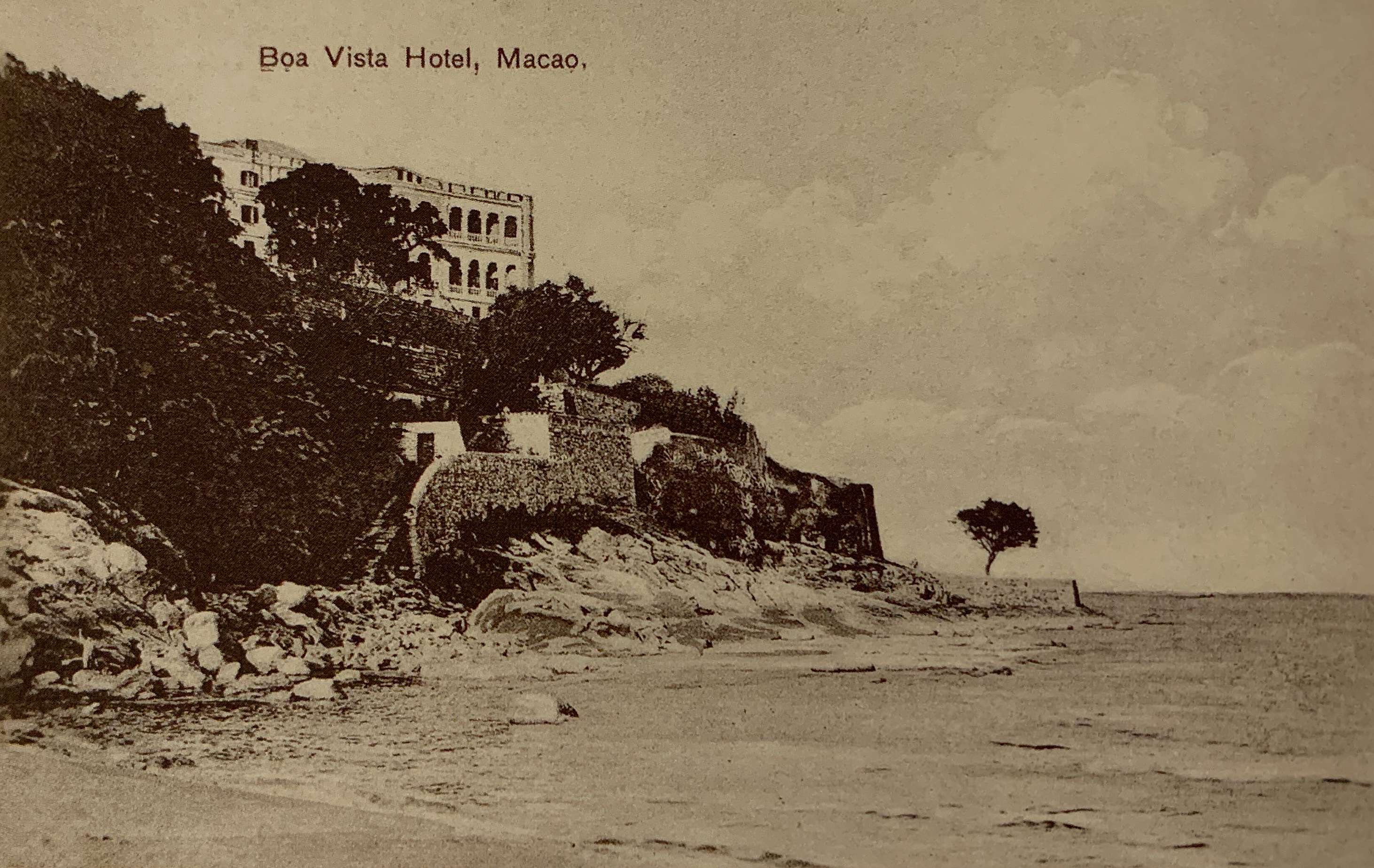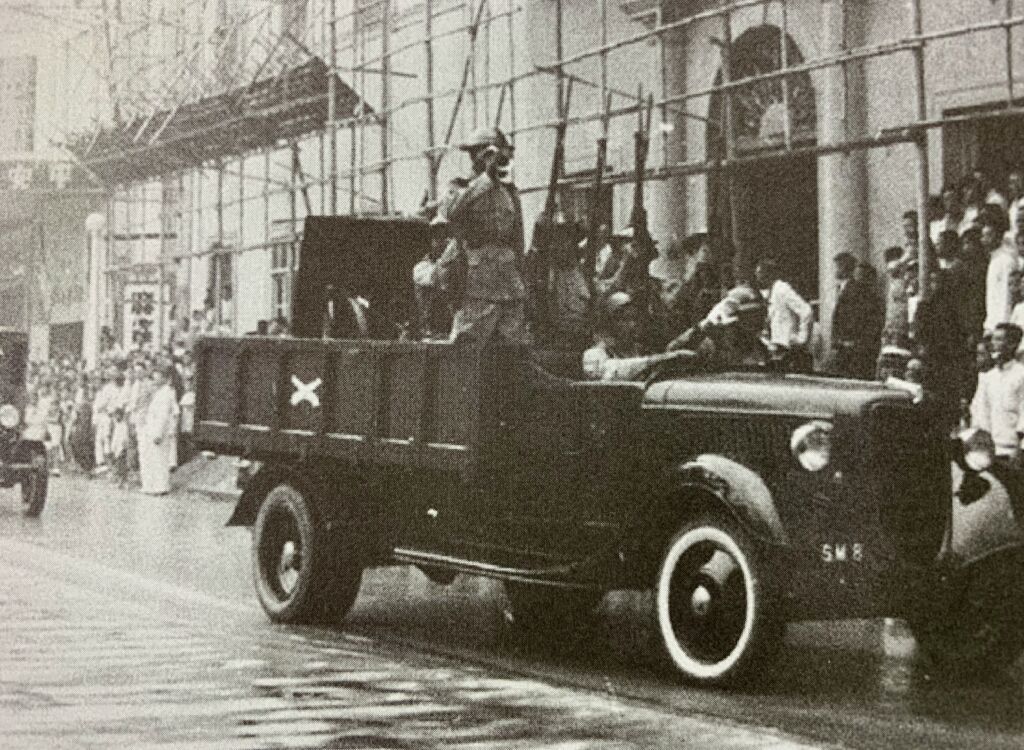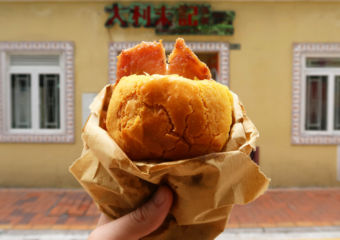Featured image source: “Macau 1937-1945: os anos da guerra” book, by João Botas
You might’ve already heard dozens and more stories on the Second World War. However, did you ever hear about those related to Macau? Was the city involved in the conflict? What were the consequences on this little town (at the time)? We let you know a bit about how it all developed back on this side of the world.
Briefly, in the war that took place from 1939 to 1945, it started with Hitler invading Poland, then the Japanese attacked the north-American base of Pearl Harbour which resulted in the Americans’ bombing of Hiroshima and Nagasaki with atomic bombs (the only use of nuclear weapons ever used in the war), and finally ending with Germany’s surrender.
Most of the warfare happened in Europe, involving relevant economies at the time–Germany, Great Britain, France, Russia, and others. While this was unraveling, Asia was also suffering as the Pacific War took place as well during the Second World War. However, it had other characters. In its center was Japan, the United States, China, and other Asian countries such as Vietnam, and Cambodia.
The Second Sino-Japanese War–between Japan and China–was already in motion since 1937, while the Pacific War started in 1941, with the invasion of Thailand, Singapore, Malaya (now Malaysia), and Hong Kong by Japan. This last invaded region is of great importance for the narrative that follows and it includes Macau. The Pacific War ended with the attacks by the USA and the occupation of Manchuria by the Soviet Union, which caused Japan to surrender.
Occupying from the Inside
Macau escaped a military invasion of the Japanese, but research argues that they were in fact managed by Japan, from the inside. But why didn’t they occupy the region? Portugal had proclaimed neutrality and Japan was forced to respect what they called “international agreements”.
Although Japan kept its forces outside the city (on the other side of the Gongbei border), the Japanese consul in Macau had more say in the political decisions of the city than the local governor himself. “Given the (war) circumstances, the Governor had no choice but to say yes to everything the Japanese wanted and imposed. The act of governing was taken by the Japanese consul and the regional military commander, colonel Sawa, who had its headquarters in Zhuhai”, João Botas explains in Macau 1937–1945: Os Anos da Guerra.
Unfortunately, Macau didn’t come out of this conflict completely unharmed. According to João Botas, the Allies violated the neutrality status, with the American forces attacking the city. They bombed the Outer Harbour area, destroying gasoline deposits. The S. Francisco Barracks was also struck with gunshots, as well as the radio central at D. Maria Fortress.

Source: “Macau 1937-1945: os anos da guerra” book, by João Botas
Macau: City of refuge
Let’s wind back a few years when Hong Kong was occupied by Japan from 1941 to 1945, starting with Sir Mark Young’s (Hong Kong’s governor at the time) surrendering of the then British crown colony to Japan on December, 1941 after almost 20 days of fighting between both forces in the territory.
As you might already know, ours is a city of no conflict, where communities live harmoniously and calmly in between; there are more than five different communities, including the Chinese, Macanese, Portuguese, Philippine, Indonesian, amongst others. It seems to have been so for some time now, including during the Second World War. During the occupation of Hong Kong, hundreds of people sought shelter wherever they could find it and one of those “safe places” was Macau, the neighboring city.
It can be said Macau was kind of isolated from the rest of the world and the combat itself. Perhaps one of the most difficult things to handle during these times was feeding everyone. Throughout the war, Macau’s population grew from 200,000 people to around half a million, with some saying it reached one million people. One can easily find first-hand testimonies from people who lived through those difficult times while experiencing how it was to be a war refugee. One of those is Russian painter George Smirnoff’s daughter, Irene.
“During the last year and a half of the Japanese occupation of Hong Kong during World War Two, my father, George Smirnoff, with some other Russian refugees, decided to move his family to the only safe place we could get to, the small neighboring Portuguese colony of Macao.” can be read on a testimony found on a book by Jason Wordie, Macao – People and places, past and present.
“As White Russians, we lived in a form of limbo during those years. We were stateless, and so was no-one’s responsibility. The Japanese categorized us–along with others, such as the numerous Portuguese born in Hong Kong, as “Third Nationals”. We were not Allied nationals – therefore liable to internment and at least some food and sustenance in the camps. Neither were we citizens of nations allied to Japan, such as Germany or Italy; nor were we Neutrals, like the Irish, the Swiss, or the Swedish. White Russians in China existed in a diplomatic no-man’s-land in those years – the charge of no-one”, she continues.

Old Postcard of Bela Vista Hotel circa 1900. Source: “Macau Antique Postcards” by João Loureiro
Buildings that kept them safe
Bela Vista Hotel was one of the main shelters at the time and received hundreds of people from Hong Kong and China as well. However, there were other buildings we now look at and would never imagine the stories they’ve seen. During the Pacific War, the Macau Military Club was run by the local government, where the authorities prepped areas to shelter these people running from Hong Kong. People have a way to romanticize historical moments and according to former consul John Reeves–in his book The Lone Flag, Macau wasn’t all warmth and hugs for the ones seeking refuge in times of war.
Macau was described by some as the only refuge within the Far East area. Hundreds of people fled Hong Kong and sought shelter in the neighboring city. Macau embraced Chinese, but also Americans, British, German, Japanese, Italian, French, and Irish people residing in Hong Kong. They stayed in abandoned theater halls and clubs, schools, even including a ship docked at the Inner Harbour.
There were still two years of warfare left and Macau was already lacking shelter for the refugees. The local government then shut down the dog races–then quite famous and frequented by the upper classes–at the Canidrome, as well as a firecrackers factory to harbor people in these buildings. The environment got heavier and heavier as the war continued and there were now rationing tickets. However, local society wasn’t that homogeneous.
The Japanese were still filling up places such as dining and party halls, restaurants, and Hotel Central’s casino. This was also where an important Portuguese figure–Pedro José Lobo–at the time made some relevant negotiations with the other side. Reeves refers to this man in this book and lets us know one Japanese once said: “Lobo is a very good friend of ours but nothing could buy his loyalty to Portugal”.
Curious “Meat”
We’re used to saying that wars are difficult times especially for the soldiers and the affected communities. Although Macau hadn’t been directly attacked nor occupied by foreign forces, the increase of the number of refugees–and mouths to feed–plus the fact that the region being tiny made it very hard for food to get in. It’s said that the mafia and criminals were involved in smuggling goods into the city, hence aiding the community.
It’s also said–although never officially, by some people who lived during those times, including Priest Manuel Teixeira–that there were several cases of anthropophagy, better known as human cannibalism. We say “cases” because it wasn’t very known amongst the population. Rather, it was part of stories told by the elderly and their parents who lived through these difficult times. Interviewed by a Portuguese newspaper in 1999, the priest who had lived almost his entire life in Macau narrated one of such episodes where someone told him human meat was being sold at Hotel Central’s sumptuous restaurant. Intrigued by this, he says, Teixeira followed some clues that led him to the Ilha Verde area, where he saw a ship with dead bodies missing some parts.
Even though times were tough, forces united in Macau to help the locals. According to Botas, even Macau’s heritage took a toll as the government gave the Japanese several materials–old canons existing at several of Macau fortresses–for the other side to use to make weapons. Banco Nacional Ultramarino (BNU) also played a relevant role during this time where it bought thousands of bags of rice for the population.
Also read: The Impact of the Opium War on Macau
Bibliography
Books:
- Macau 1937–1945: Os Anos da Guerra, by João Botas (2012)
Online sources:
- Interview “Padre Manuel Teixeira, 87 anos: “Não quero assistir à morte de Macau”, in Público newspaper
- Article “The Lone Flag: Macau’s WWII British consul”, in South China Morning Post Magazine
- Article “Book: The Lone Flag: Memoir of the British Consul in Macau during World War II”, in the Portuguese American Journal



































